|
Author
|
Message
|
|
DryLakesRacer
|
|
|
Group: Forum Members
Last Active: Last Month
Posts: 1.7K,
Visits: 340.1K
|
I installed a PCV system on my 56 292. I documented it here. I used a 61-64 valley cover with a fitting on the opening with a 1/2 tube nipple attached. The PCV valve was one I purchased off the net which screwed into a 90* fitting at the rear of the carb base originally for a 1961 Mercury. Since I have dual quads it mounts between the 2 carbs. A V100 valve is available today and works perfectly. If your system works properly the oil fill tube should be able to hold a piece of paper to it when the engine is idling. If you can put a vacuum gauge on your oil fill it should read between 1 and 3 inches of vacuum. Mine was slightly over 1 thru the dip stick hole and sealing off the oil fill tube. This was good so I added a rubber seal on the dip stick. I then decided to NOT have unfiltered air enter my engine thru the oil fill tube breather I bought a cap with a 1/2” nipple attached and made it feed from inside of the air cleaner on the filtered side. I’m including a photo of that fitting holding a piece of paper while the engine is idling; you can also see in the photo the style of oil fill cap and the hose, This is exactly how the factory still designs and installs PCV systems today. The white fitting was turned around after this photo was taken. My engine no longer smells when I pull into my garage and the oil leak at the rear of my engine has been drastically reduced. I am not sure why a PCV valve located at the rear in the valley cover would suck oil unless it did not have deflector plate like the Thunderbirds or 61-up cars and trucks. Ted Eaton has showed a PCV valve placed there and never mentioned it sucked in oil. 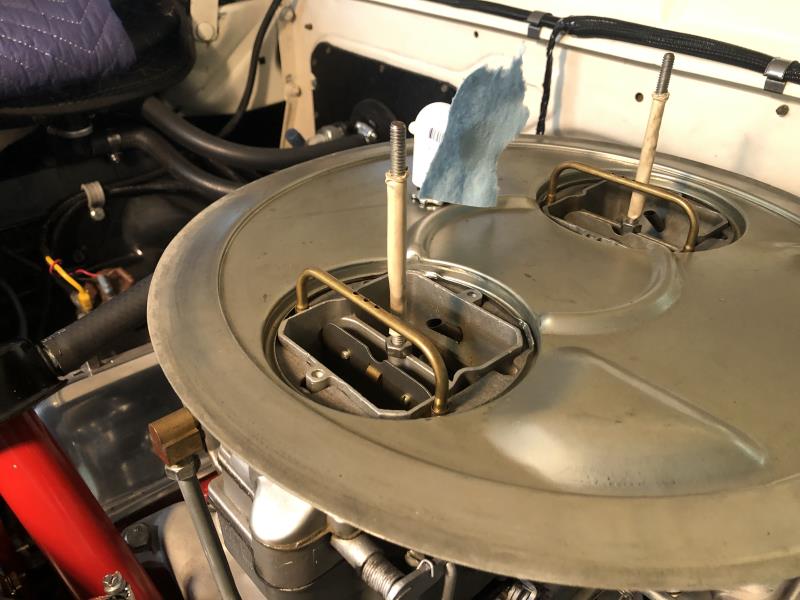
|
|
|
|
|
KULTULZ
|
|
|
Group: Forum Members
Last Active: Yesterday
Posts: 1.8K,
Visits: 306.3K
|
Attach your vacuum gauge to the dipstick tube to take the draft reading.
____________________________
|
|
|
|
|
PF Arcand
|
|
|
Group: Forum Members
Last Active: Last Year
Posts: 3.3K,
Visits: 238.8K
|
Lot of clarity issues with this question.. One that occurs to me is the PCV mount in the valley pan. Is it by chance a std Valley pan that was used with a Block side draft tube setup originally? If so, it wouldn't have any kind of oil deflector originally.. Or was the deflector underneath removed when the rear type road draft tube was taken off ??. PCV setups can tend to draw oil in some cases...
Paul
|
|
|
|
|
KULTULZ
|
|
|
Group: Forum Members
Last Active: Yesterday
Posts: 1.8K,
Visits: 306.3K
|
Lot of clarity issues with this question.. One that occurs to me is the PCV mount in the valley pan. Is it by chance a std Valley pan that was used with a Block side draft tube setup originally? If so, it wouldn't have any kind of oil deflector originally.. Or was the deflector underneath removed when the rear type road draft tube was taken off ??. PCV setups can tend to draw oil in some cases...
Paul
No, the 1954/57 pan used with the block mounted road draft had only one baffle, the front one. It was designed to force incoming fresh air onto the top of the cylinder heads to ventilate that part of the engine. This design was modified in 1955 BIRD only as it used a pan mounted road draft tube, FORD followed in 1958 (or the 57 E-CODE).
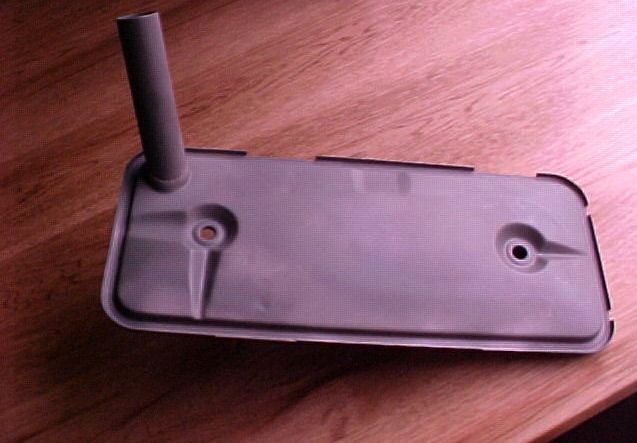
EDIT -
FORD went to the valley pan mounted draft tube (FYB) in the 1958 model year.
EDIT of a previous EDIT - (you can do that)
FORD first used the pan mounted draft tube on the 1955/57 BIRD and 1957 FORD E & F CODES.
1958 saw the full use of the pan mounted system (PASS CAR).
____________________________
|
|
|
|
|
DryLakesRacer
|
|
|
Group: Forum Members
Last Active: Last Month
Posts: 1.7K,
Visits: 340.1K
|
Drilling a hole in that valley cover, adding a grommet for the PCV valve without welding in a defector/ baffle under it would defiantly cause oil suck into the intake. There is a rubber grommet used on aftermarket rocker covers, normally SBC’s, will really help. I installed one on a friends sons engine 20 years ago with success. The rocker cover did not have a baffle.
56 Vic, B'Ville 200 MPH Club Member, So Cal.
|
|
|
|
|
skyhunter
|
|
|
Group: Forum Members
Last Active: 2 Years Ago
Posts: 72,
Visits: 354
|
Sorry, still waiting on the vehicles.
Some further info. The valley cover is an aluminum one with a breather hole and baffled rear breather box from John Mummert.
The PCV valve is one that fits the 289, 302, 351 engines.
The 292 is a rebuild long block so no PCV or draft tube came with it.
1959 Edsel Ranger, 1916 Ford "speedster"
"I may not be a rich man, but I can give you a million dollars' worth of bad publicity."
|
|
|
|
|
KULTULZ
|
|
|
Group: Forum Members
Last Active: Yesterday
Posts: 1.8K,
Visits: 306.3K
|
The valley cover is an aluminum one with a breather hole and baffled rear breather box from John Mummert.
Shown is a BLUE THUNDER. Is it anything alike?
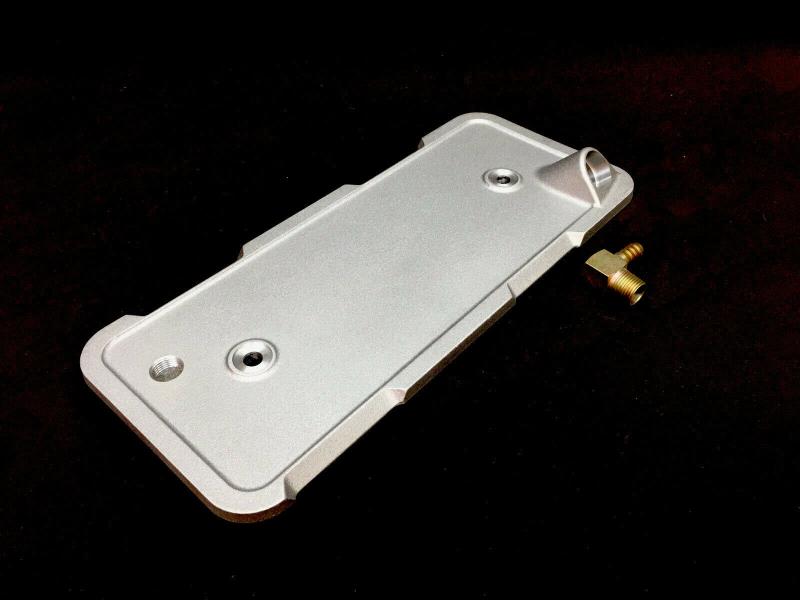
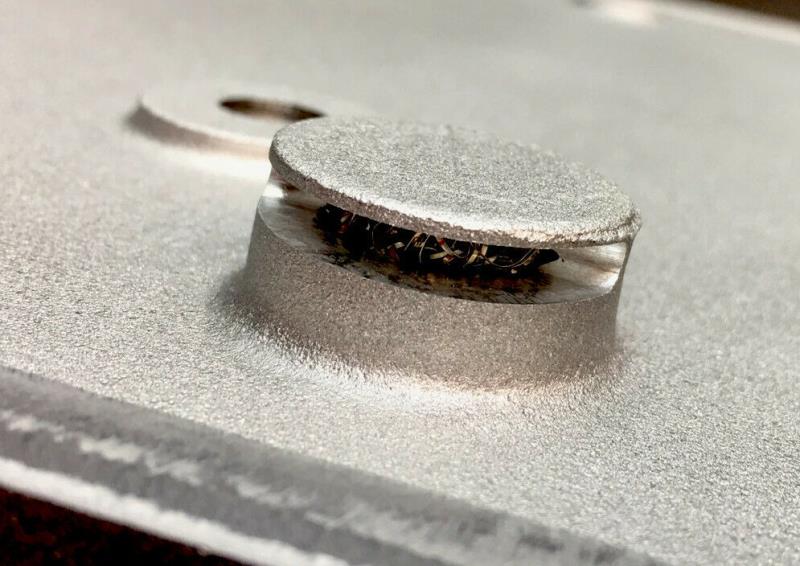
____________________________
|
|
|
|
|
Ted
|
|
|
Group: Administrators
Last Active: 6 days ago
Posts: 7.5K,
Visits: 205.8K
|
|
|
|
|
|
Daniel Jessup
|
|
|
Group: Forum Members
Last Active: 2 days ago
Posts: 2.0K,
Visits: 130.9K
|
On a related note, but probably one that leans towards performance - Ted, can you explain a little about what looked to be an "exhaust vacuum" set up that you had on your Y Block in the altered T bucket? I do wonder if there is any benefit to a street car adapting this kind of configuration to help scavenge the block of blowby... As I recall you had this setup on both headers and there was a line that ran to a baffled cap at the rear of each valve cover? 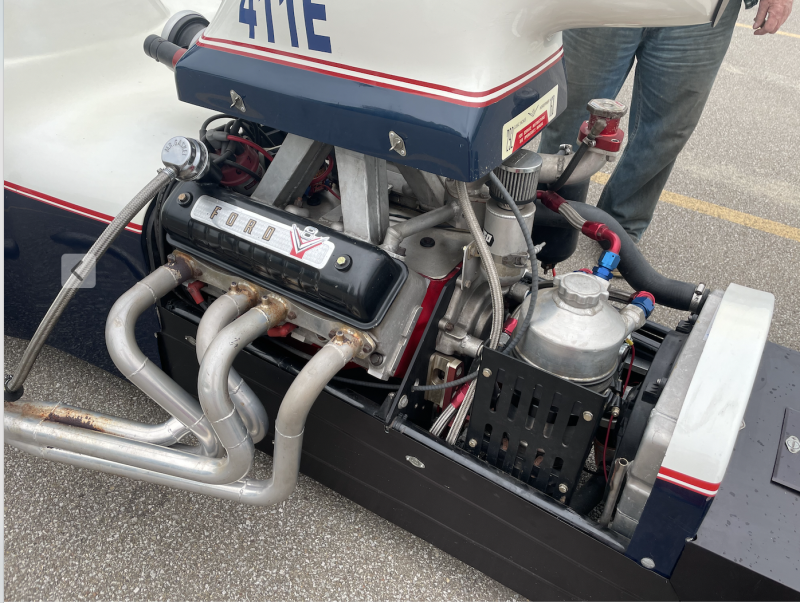 Daniel Jessup
Daniel JessupLancaster, California aka "The Hot Rod Reverend" 
check out the 1955 Ford Fairlane build at www.hotrodreverend.com
|
|
|
|
|
Ted
|
|
|
Group: Administrators
Last Active: 6 days ago
Posts: 7.5K,
Visits: 205.8K
|
Daniel Jessup (6/26/2021)
On a related note, but probably one that leans towards performance - Ted, can you explain a little about what looked to be an "exhaust vacuum" set up that you had on your Y Block in the altered T bucket? I do wonder if there is any benefit to a street car adapting this kind of configuration to help scavenge the block of blowby... As I recall you had this setup on both headers and there was a line that ran to a baffled cap at the rear of each valve cover?That’s a crankcase evacuation system which is powered by exhaust flow in the header collector. In lieu of using a four or five stage dry sump oil pump, I’m using the exhaust the help draw a vacuum on the crankcase. My roadster is only using a three stage oil pump and that does not generate adequate negative pressure to aid in the performance. The crankcase is physically sealed up so there is no air movement into the engine thus aiding the removal of whatever air is present there. There is a check valve on each header to keep any positive exhaust pressure out of the crankcase which could happen at low rpm without the check valves. With all that being said, these systems work well on race cars where there is no back pressure in the exhaust being present. You don’t see the exhaust evacuation systems on street cars due to an accumulation of oil building up in the mufflers, insufficient vacuum being generated either from the rpm being too low, and/or back pressure in the exhaust system preventing a vacuum from being generated. Engine oil making its way through the exhaust side check valves and slowly stopping up the mufflers would be at the top of the list for why these systems are not used on street cars.
  Lorena, Texas (South of Waco) Lorena, Texas (South of Waco)
|
|
|
|